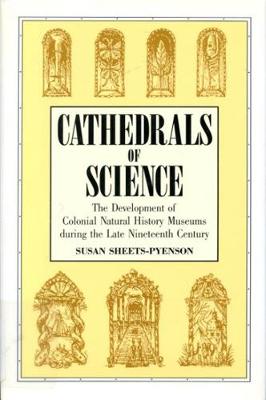The "museum movement" of the late nineteenth century resulted in the creation and expansion of museums throughout Europe and North America and stimulated institutional development in far-flung quarters of the globe. From Melbourne to Montreal, museums were founded and revitalized. By examining the development of natural history museums in Australasia, Canada, and South America, Susan Sheets-Pyenson shows how colonial museum directors mobilized resources from reluctant provincial legislators, national governments, and college trustees. Local architects were often hired to realize the visions of glittering palaces to science that danced in the minds of colonial curators. Museums in the hinterland managed to assemble large and significant collections which included prime materials obtained from abroad. Using either cash or rare treasures as barter, curators entered a complicated system by which natural history specimens changed hands. The growth of collections overseas always remained subject to particular individual and cultural aspirations.
Reigning opinion about the educational function of museums, proper methods of displaying specimens, and the use of research materials was tailored to fit particular circumstances. Colonial natural history museums were an important and previously neglected feature in the developing landscape of "big science." Although the "museum movement" died at the turn of the century, it left a legacy of cathedrals of science as monuments to remarkable intellectual visions.
- ISBN10 0773506551
- ISBN13 9780773506558
- Publish Date 1 November 1988
- Publish Status Active
- Publish Country CA
- Imprint McGill-Queen's University Press
- Format Hardcover
- Pages 160
- Language English
